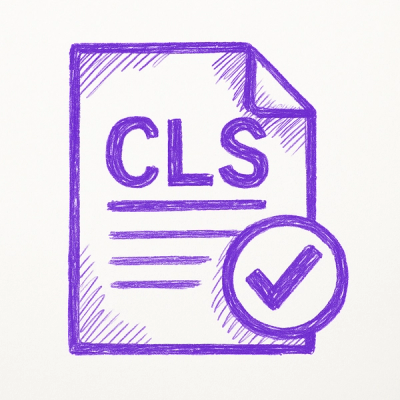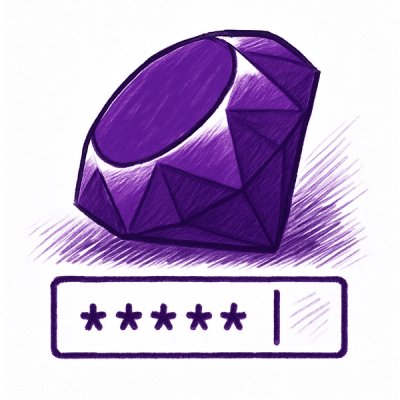
Security News
Opengrep Adds Apex Support and New Rule Controls in Latest Updates
The latest Opengrep releases add Apex scanning, precision rule tuning, and performance gains for open source static code analysis.
github.com/gnulnx/goquery
goquery brings a syntax and a set of features similar to jQuery to the Go language. It is based on Go's net/html package and the CSS Selector library cascadia. Since the net/html parser returns nodes, and not a full-featured DOM tree, jQuery's stateful manipulation functions (like height(), css(), detach()) have been left off.
Also, because the net/html parser requires UTF-8 encoding, so does goquery: it is the caller's responsibility to ensure that the source document provides UTF-8 encoded HTML. See the wiki for various options to do this.
Syntax-wise, it is as close as possible to jQuery, with the same function names when possible, and that warm and fuzzy chainable interface. jQuery being the ultra-popular library that it is, I felt that writing a similar HTML-manipulating library was better to follow its API than to start anew (in the same spirit as Go's fmt package), even though some of its methods are less than intuitive (looking at you, index()...).
Please note that because of the net/html dependency, goquery requires Go1.1+.
$ go get github.com/PuerkitoBio/goquery
(optional) To run unit tests:
$ cd $GOPATH/src/github.com/PuerkitoBio/goquery
$ go test
(optional) To run benchmarks (warning: it runs for a few minutes):
$ cd $GOPATH/src/github.com/PuerkitoBio/goquery
$ go test -bench=".*"
Note that goquery's API is now stable, and will not break.
ToEnd constant to Slice until the end of the selection (thanks to @davidjwilkins for raising the issue).AddBack* and deprecate AndSelf (thanks to @davidjwilkins).SetHtml and SetText (thanks to @glebtv).Selection.Text (thanks to @radovskyb).Matcher implementation that never matches any node (instead of a panic). So for example, doc.Find("~") returns an empty *Selection object.NodeName utility function similar to the DOM's nodeName property. It returns the tag name of the first element in a selection, and other relevant values of non-element nodes (see godoc for details). Add OuterHtml utility function similar to the DOM's outerHTML property (named OuterHtml in small caps for consistency with the existing Html method on the Selection).AttrOr helper method to return the attribute's value or a default value if absent. Thanks to piotrkowalczuk.*Matcher functions, that receive compiled cascadia selectors instead of selector strings, thus avoiding potential panics thrown by goquery via cascadia.MustCompile calls. This results in better performance (selectors can be compiled once and reused) and more idiomatic error handling (you can handle cascadia's compilation errors, instead of recovering from panics, which had been bugging me for a long time). Note that the actual type expected is a Matcher interface, that cascadia.Selector implements. Other matcher implementations could be used.html.Nodes.NewDocumentFromReader() (thanks jweir) which allows creating a goquery document from an io.Reader.NewDocumentFromResponse() (thanks assassingj) which allows creating a goquery document from an http response.EachWithBreak() which allows to break out of an Each() loop by returning false. This function was added instead of changing the existing Each() to avoid breaking compatibility.Document.Root is removed, Document is now a Selection itself (a selection of one, the root element, just like Document.Root was before). Add jQuery's Closest() method.goquery exposes two structs, Document and Selection, and the Matcher interface. Unlike jQuery, which is loaded as part of a DOM document, and thus acts on its containing document, goquery doesn't know which HTML document to act upon. So it needs to be told, and that's what the Document type is for. It holds the root document node as the initial Selection value to manipulate.
jQuery often has many variants for the same function (no argument, a selector string argument, a jQuery object argument, a DOM element argument, ...). Instead of exposing the same features in goquery as a single method with variadic empty interface arguments, statically-typed signatures are used following this naming convention:
Prev()), and the version with a selector string argument is called XxxFiltered() (e.g.: PrevFiltered())Is())XxxSelection() and take a *Selection object as argument (e.g.: FilterSelection())XxxNodes() and take a variadic argument of type *html.Node (e.g.: FilterNodes())XxxFunction() and take a function as argument (e.g.: FilterFunction())Matcher interface and are defined as XxxMatcher() (e.g.: IsMatcher())Utility functions that are not in jQuery but are useful in Go are implemented as functions (that take a *Selection as parameter), to avoid a potential naming clash on the *Selection's methods (reserved for jQuery-equivalent behaviour).
The complete godoc reference documentation can be found here.
Please note that Cascadia's selectors do not necessarily match all supported selectors of jQuery (Sizzle). See the cascadia project for details. Invalid selector strings compile to a Matcher that fails to match any node. Behaviour of the various functions that take a selector string as argument follows from that fact, e.g. (where ~ is an invalid selector string):
Find("~") returns an empty selection because the selector string doesn't match anything.Add("~") returns a new selection that holds the same nodes as the original selection, because it didn't add any node (selector string didn't match anything).ParentsFiltered("~") returns an empty selection because the selector string doesn't match anything.ParentsUntil("~") returns all parents of the selection because the selector string didn't match any element to stop before the top element.See some tips and tricks in the wiki.
Adapted from example_test.go:
package main
import (
"fmt"
"log"
"github.com/PuerkitoBio/goquery"
)
func ExampleScrape() {
doc, err := goquery.NewDocument("http://metalsucks.net")
if err != nil {
log.Fatal(err)
}
// Find the review items
doc.Find(".sidebar-reviews article .content-block").Each(func(i int, s *goquery.Selection) {
// For each item found, get the band and title
band := s.Find("a").Text()
title := s.Find("i").Text()
fmt.Printf("Review %d: %s - %s\n", i, band, title)
})
}
func main() {
ExampleScrape()
}
The BSD 3-Clause license, the same as the Go language. Cascadia's license is here.
FAQs
Unknown package
Did you know?

Socket for GitHub automatically highlights issues in each pull request and monitors the health of all your open source dependencies. Discover the contents of your packages and block harmful activity before you install or update your dependencies.

Security News
The latest Opengrep releases add Apex scanning, precision rule tuning, and performance gains for open source static code analysis.

Security News
npm now supports Trusted Publishing with OIDC, enabling secure package publishing directly from CI/CD workflows without relying on long-lived tokens.

Research
/Security News
A RubyGems malware campaign used 60 malicious packages posing as automation tools to steal credentials from social media and marketing tool users.